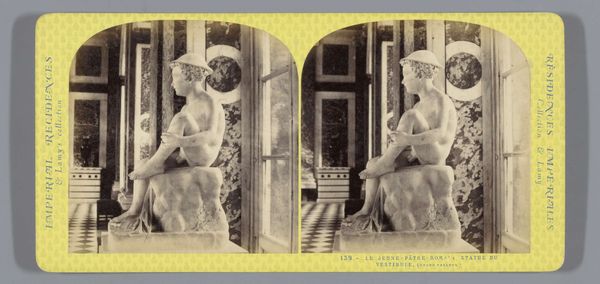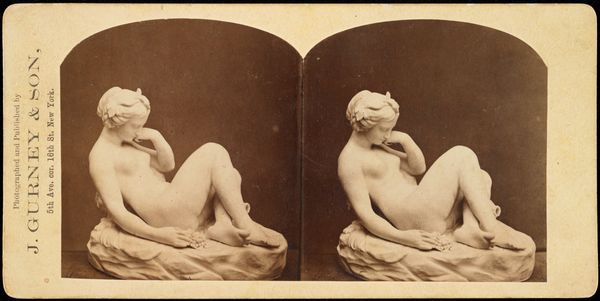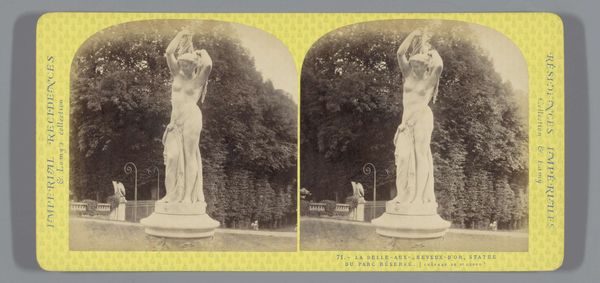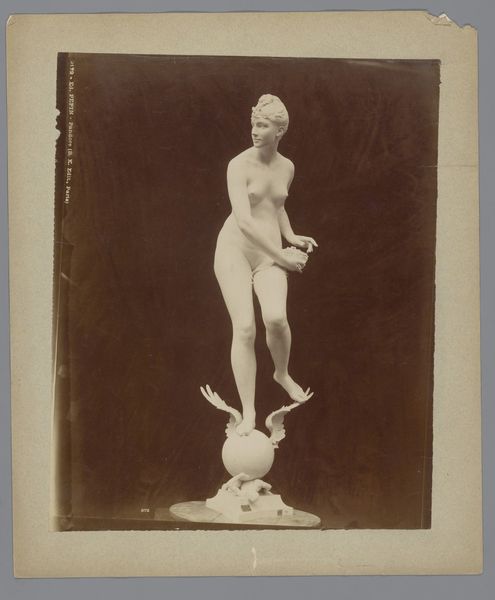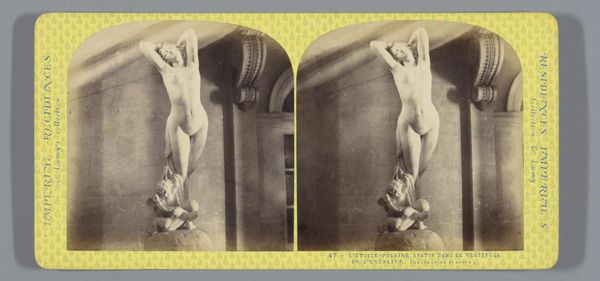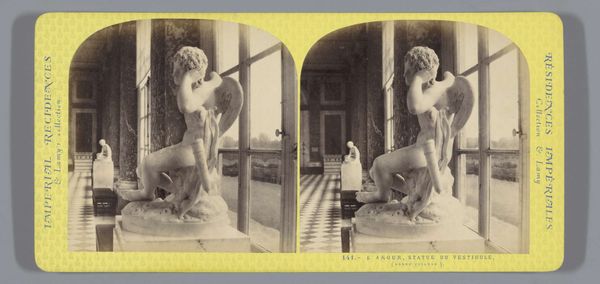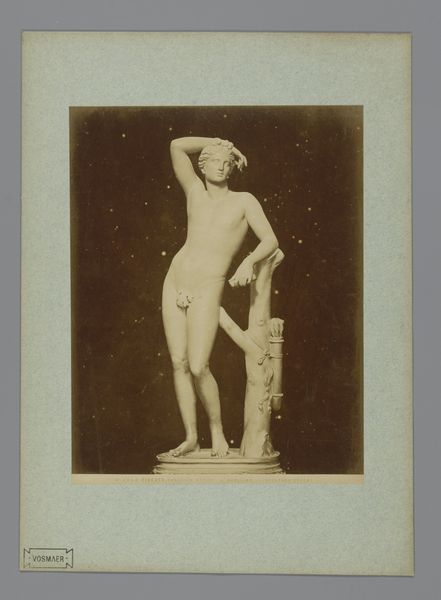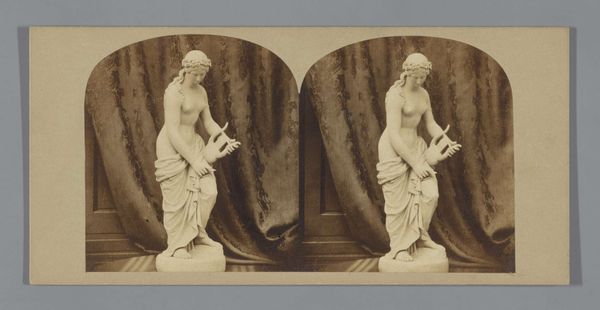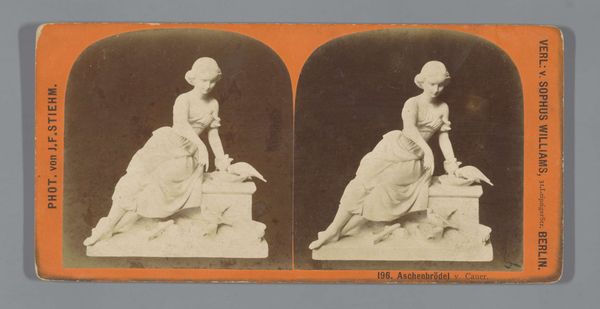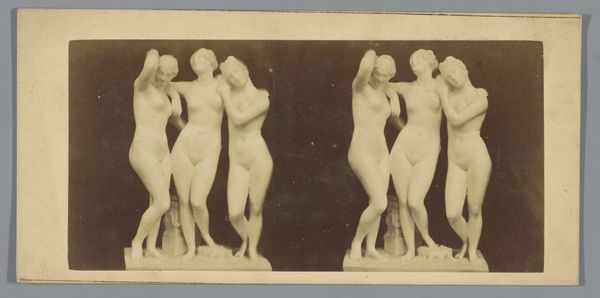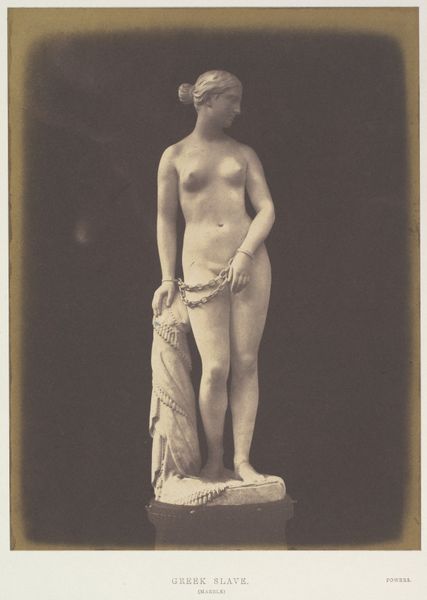
Sculptuur in het Parc de Saint-Cloud, voorstellende de Ondeugd before 1870
0:00
0:00
photography, sculpture, gelatin-silver-print
#
landscape
#
classical-realism
#
photography
#
sculpture
#
gelatin-silver-print
#
academic-art
#
nude
Dimensions: height 85 mm, width 170 mm
Copyright: Rijks Museum: Open Domain
Curator: The overall impression for me is somewhat melancholic. It’s not what I’d expect from a representation of vice. Editor: Let’s orient our listeners. What we’re looking at is a gelatin silver print capturing a sculpture. The title translates to “Sculpture in the Parc de Saint-Cloud, representing Vice,” and it's credited to Ernest Eléonor Pierre Lamy, dating from before 1870. Curator: Perhaps it's a comment on the vulnerability of innocence corrupted by societal influences? She sits there so exposed, yet also so… awkward. Editor: That awkwardness could speak volumes about the conflicting moral codes of the 19th century. Nudity, particularly of the idealized female form, was acceptable within artistic contexts steeped in classical realism but viewed very differently in the public sphere. It's all wrapped up in societal and religious expectations. Curator: It's interesting to consider it within the frame of cultural memory and its own symbols. Is vice beautiful or dangerous? Does the work ask the viewer to confront the unsettling tension, or something else? Editor: The photograph itself contributes to that tension, don't you think? By documenting a statue in a park setting, Lamy mediates the vice it represents, situating it within both an idealized landscape and the controlled environment of art. In some way it offers an ordered transgression of public behavior. Curator: Perhaps in domesticating the taboo into art and imagery, viewers become somewhat immune. They participate in its performance as well, since this photograph invites our continued observation. It certainly moves past any straightforward condemnation. Editor: Indeed. The role of images like this in shaping public discourse around morality and beauty should be taken very seriously. What do they normalize? What do they censure? And where does personal interpretation intersect with those established boundaries? Curator: It’s a fascinating paradox—a still, silent image carrying the burden of historical social commentary while still stirring something so fundamentally human in me. Editor: A conversation far from finished, then, proving that art never exists in a vacuum. Thank you both for this wonderful look.
Comments
No comments
Be the first to comment and join the conversation on the ultimate creative platform.
